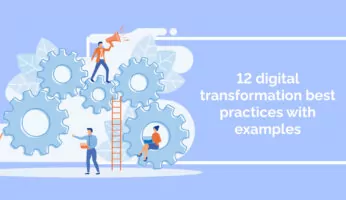
Workday® challenges can have a significant impact on your ability to achieve full adoption of the software platform. If left unaddressed, these challenges can lower the ROI of your software investment or, in a worst case scenario, cause it to fail completely.
Below, we’ll look at a few ways to overcome common barriers that arise during Workday® adoption.
Workday® 101
Workday® is a finance, HR, and planning system that has become extraordinarily popular in recent years.
This platform has a wide variety of solutions including:
- Financial management
- Human capital management
- Enterprise planning
- Talent management
- Spend management
- Payroll
- Workforce management
- Analytics and reporting
Workday® is used in a wide number of industries ranging from education to hospitality to manufacturing and more. The effective use of Workday® can drive performance gains across your organization, spurring innovation, digital transformation, and even driving a competitive advantage.
However, given the complexity, scope, and scale of this enterprise platform, implementing this solution takes time, energy, and it is not easy.
Failure to successfully implement Workday® can drain budgets, employee morale, and it can ultimately diminish your software ROI.
For these reasons, it is critical to develop a digital adoption strategy to help you overcome issues and protect the productivity and profitability of your software investment.
How to Plan for and Overcome Workday® Challenges
Here are a few ways to plan for, prevent, and overcome Workday® challenges.
1. Develop a change management strategy
Change management is the business discipline focused on maximizing the success of an organizational change program while minimizing obstacles, barriers, and problems.
When implementing Workday®, which will be a major change for your business, consider following standard change management frameworks, such as ADKAR or Kotter’s 8-Step Change Model.
These can help you minimize resistance to change, ensure that employees have the right skills, and maximize your ability to meet your adoption goals.
For example, following a change management framework such as those mentioned above, you would:
- Ensure employees are aware of why work day is necessary
- Explain how it benefits them personally
- Describe what changes will occur with the adoption
- Cultivate a desire to change and adopt the software
- Ensure they have the tools and skills needed to drive the adoption forward
At the same time, you would develop strategies for overcoming potential barriers, first by identifying those barriers, and then by developing specific plans to overcome them.
For example, resistance to change is a common barrier to any change project, including Workday® implementation.
After identifying this barrier, you would seek to understand its cause and address those causes.
Since resistance is often based on fear or inertia, mitigation strategies often focus on communication, involving employees in decision-making processes, and making them feel like a part of the change. Other ways to boost employee confidence and further enable change involve shrinking the digital skills gap through effective training, a focal point for many change management frameworks.
2. Partner with IT
The IT department is a vital resource when implementing any digital adoption project, particularly one as complex as Workday®.
Regardless of which department initiated the Workday® adoption program, it is important to also have IT leadership at the helm. Contact the CIO, CTO, and other relevant leaders, then obtain their support – their voices will be necessary to initiating the processes, people, and tools that will enable successful adoption.
IT can assist with key challenges such as:
- Data migration
- The implementation of digital adoption systems
- System testing
- Software deployment
- Technical support
IT can and should play a key leadership role in your Workday® implementation, and their support will be critical to overcoming unforeseen obstacles that may arise.
3. Structure your digital workplace around Workday®
When rolling out any new software, it is important not to underestimate the complexity and effort required when implementing a new project or software such as Workday®.
Sophisticated, complex programs are difficult enough, but Workday® is designed to be integrated, if not serve as a central hub, for your entire digital ecosystem. As the central axis around which or other software applications are involved, your entire digital ecosystem must have a design that puts Workday® at the center.
Naturally, not all software programs will integrate under Workday®’s umbrella, but the digital office is designed to operate with Workday® at the center.
For that reason, it is essential to focus on maximizing the value that you receive from Workday®, by creating a structured digital adoption strategy.
The goals of this program should focus on:
- Fully utilizing the software features
- Streamlining the on boarding and training experiences for employees
- Maximizing employee productivity
- Integrating the software with other tools in your digital ecosystem
- Optimizing business processes around Workday®
- Flexibly responding to changes as they occur
A digital adoption strategy that places Workday® at the center of your digital workplace can maximize the output and outcomes of your project while also minimizing time to productivity and reducing software-related frustration.
WalkMe Team
WalkMe spearheaded the Digital Adoption Platform (DAP) for associations to use the maximum capacity of their advanced resources. Utilizing man-made consciousness, AI, and context-oriented direction, WalkMe adds a powerful UI layer to raise the computerized proficiency, everything being equal.



